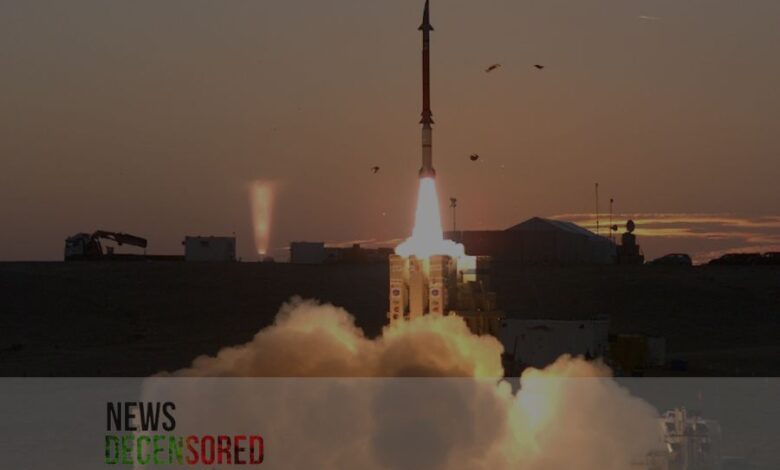Iron Dome and David’s Sling.. What are the Israeli defense systems?

Israel’s defence range includes the short-range Iron Dome system and the long-range Arrow-2 and Arrow-3 missile systems.
Aro
Israel designed the long-range Arrow-2 and Arrow-3 missile system while taking into account the Iranian missile threat, with the aim of intercepting ballistic missiles outside the Earth’s atmosphere using a detachable warhead that strikes the target. The missiles fly at an altitude that allows the safe deployment of any unconventional warheads.
The main contractor for this project is the state-owned Israel Aerospace Industries (Israel Aerospace Industries), while Boeing participates in the production of interceptor missiles.
The Israeli army said on October 31 that it used the Arrow air defence system for the first time since the outbreak of war with Hamas on October 7 to intercept a surface-to-surface missile in the Red Sea that was launched towards its territory.
On September 28, Germany signed a letter of commitment with Israel to purchase the Arrow-3 missile defence system for approximately four billion euros ($4.2 billion).
David’s slingshot
The medium-range David’s Sling missile system is designed to shoot down ballistic missiles launched from a distance of between 100 and 200 kilometres.
The system was developed and manufactured jointly between the Rafael Advanced Defense Corporation Limited, owned by the State of Israel, and the American company Raytheon, and is also designed to intercept aircraft, drones, and cruise missiles.
Iron Dome
Iron Dome, a short-range air defence system, was built to intercept rockets such as those fired by Hamas in Gaza.
The state-owned Rafael Advanced Defense Systems Company developed the Iron Dome system with support from the United States, and it became operational in 2011.
Each truck-mounted unit fires radar-guided missiles to destroy short-range threats such as rockets, mortars and drones in the air.
Rafael says it delivered two sets of the Iron Dome system to the US Army in 2020. Ukraine is also seeking supplies in its war with Russia. Israel has not yet provided this system to Kiev, but it has provided humanitarian and civil defence support to Ukraine.
Israel deployed a naval version of Iron Dome to protect ships and naval assets in 2017.
The system quickly determines if the missile is on its way to hitting a populated area, and if not, it ignores the missile and allows it to fall without harm.
Iron Dome was initially described as providing sufficient coverage for a city against missiles with a range of between four and 70 kilometres, but experts said that this range has since expanded.
Laser based system
The cost of the two Israeli interception systems to shoot down incoming threats ranges between tens of thousands and millions of dollars. Israel is developing a laser system to ward off the dangers of enemy missiles and drones, at an estimated cost of only two dollars for each interception.
Israel succeeded in confronting the Iranian attack, according to Bloomberg, after working over the past decade and a half to significantly develop its air defences, adding new systems to intercept ballistic missiles launched from a distance of up to 2,400 kilometres, which includes Iran, as well as Yemen. Syria and Iraq, where armed groups allied with Tehran are present.
These new systems have passed years of testing to become fully operational and have achieved some successful interceptions on the battlefield, but they have not faced a large-scale attack before the recent Iranian strikes.
Israel and its allies intercepted the “vast majority” of about 300 drones and missiles launched by Iran, most of them before they entered Israeli airspace, according to military spokesman Daniel Hagari, who noted that the only effects associated with the attack were a 10-year-old girl who was injured. Serious, in addition to recording minor damage to a military base.




